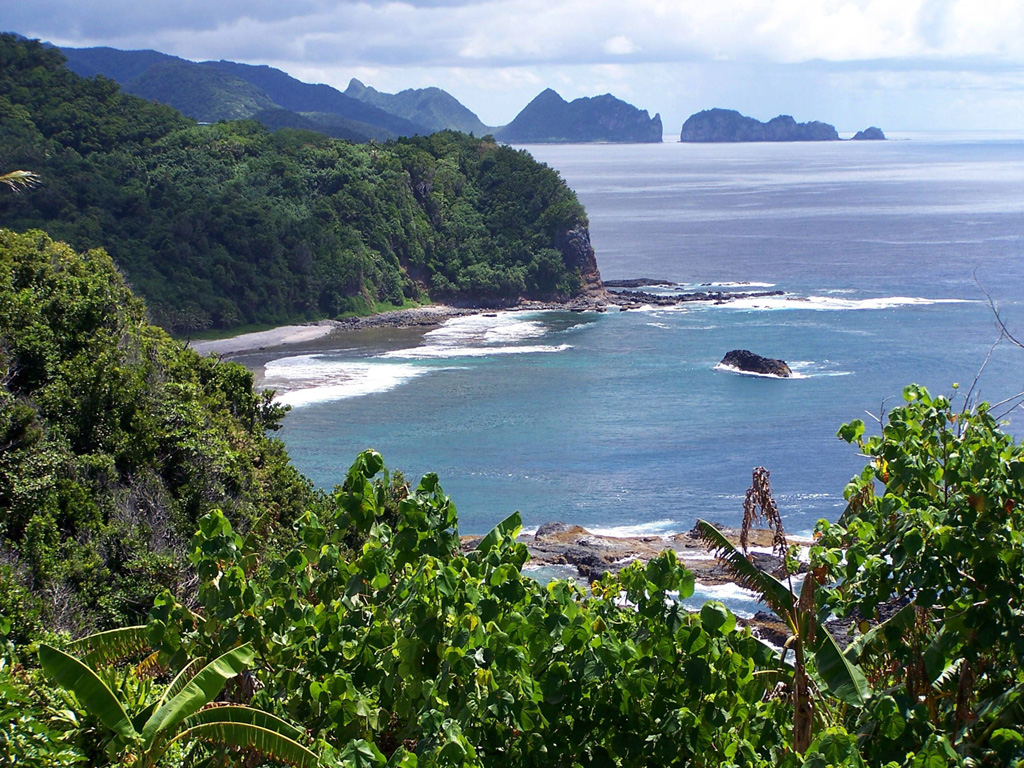Global Volcanism Program | Image GVP-12007

Cliffs and an offshore island mark the rugged coastline of Tutuila Island. The elongated, extensively eroded Tutuila in the center of the Samoan Islands consists of five Pliocene-to-Pleistocene volcanoes constructed along rifts trending SSW-NNE. Following a lengthy period of erosion, submergence, and the construction of a barrier reef, the Leone volcanics were erupted during the Holocene along a 5-km-long N-S-trending fissure, forming a group of scoria cones that produced pahoehoe lava flows.
Photo by Tavita Togia, 2004 (U. S. National Park Service).
![]() This image is made available as a Public Domain Work, but proper attribution is appreciated.
This image is made available as a Public Domain Work, but proper attribution is appreciated.
Keywords: island volcano

Tutuila
